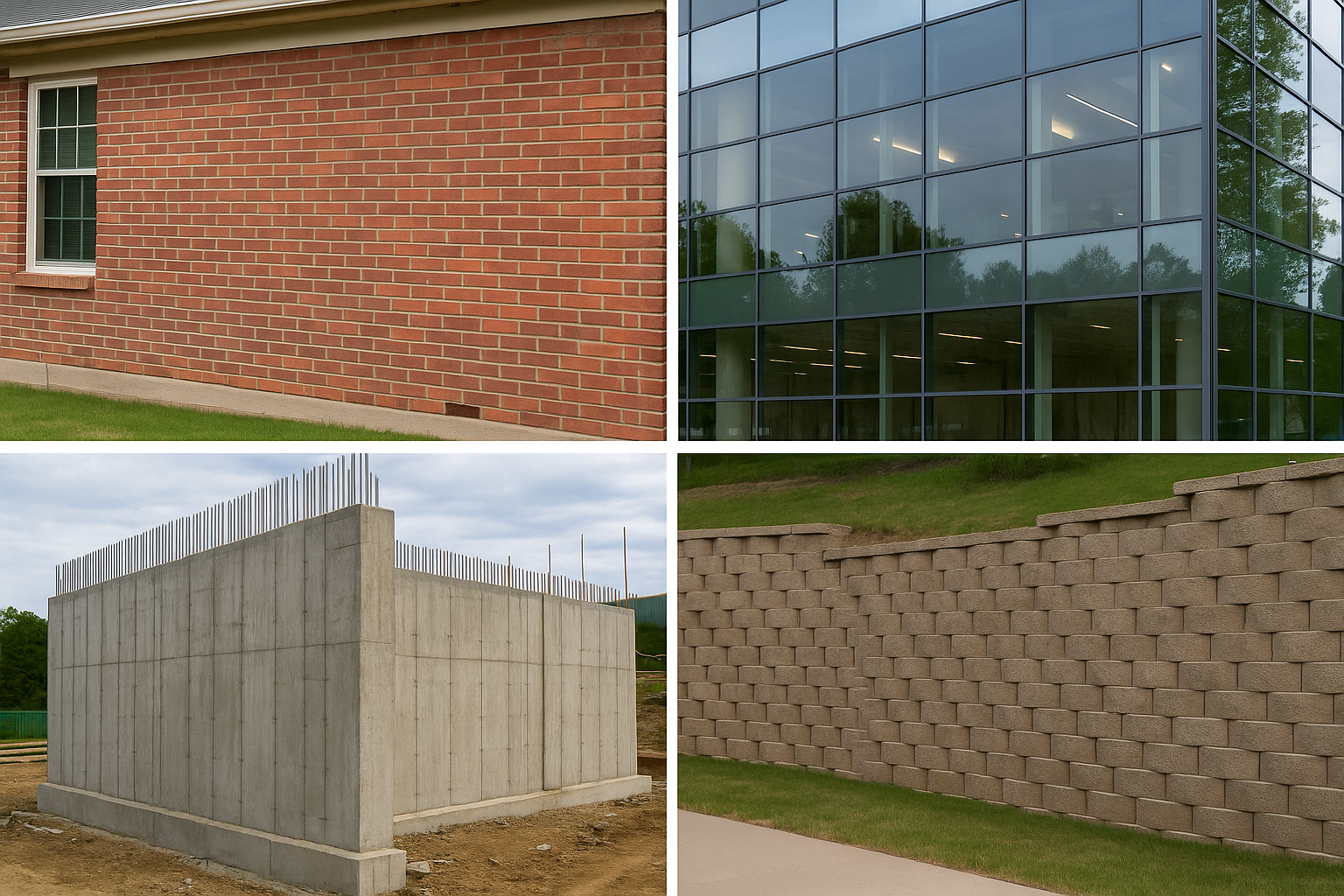Walls are one of the most important elements in any building. Different wall types serve different purposes in construction — from carrying loads to providing safety or simply enhancing design. Understanding wall solutions, their materials, properties, and uses helps in choosing the right option for each project.
Load Bearing Wall
- What it is: A structural element that carries the weight of the building.
- How it works: Transfers the weight of the roof and slabs down to the foundation.
- Materials used: Brick, concrete, stone, or wood.
- Advantages: Easy to construct and reduces overall cost.
- Common use: Found in low-rise residential buildings.
Curtain Wall
- What it is: A lightweight wall that does not carry the load of the building.
- Function: Acts as a weather barrier while allowing natural light inside.
- Materials used: Glass panels with steel or composite frames.
- Advantages: Improves indoor lighting and is energy-efficient.
- Common use: Popular in high-rise office and commercial buildings.
Shear Wall
- What it is: A structural wall that resists lateral forces such as wind or seismic loads.
- Function: Prevents excessive sway and ensures building stability.
- Materials used: Reinforced concrete (RCC), steel, or bricks.
- Advantages: Maintains structural integrity and safety.
- Common use: Essential in high-rise buildings in earthquake-prone zones.
Retaining Wall
- What it is: A structural wall that holds back soil and prevents erosion on sloped terrains.
- Function: Creates usable land on slopes and helps control water runoff.
- Materials used: Reinforced concrete, stone, or modular blocks.
- Advantages: Reduces hazards of unstable terrain.
- Common use: Found in terraced landscapes, gardens, and boundaries.
Conclusion
Choosing the right wall type in construction depends on the purpose, structure, and environment of the project. Load bearing walls ensure strength in low-rise homes, curtain walls enhance light and design in tall offices, shear walls keep high-rise buildings safe, and retaining walls protect landscapes from erosion.
